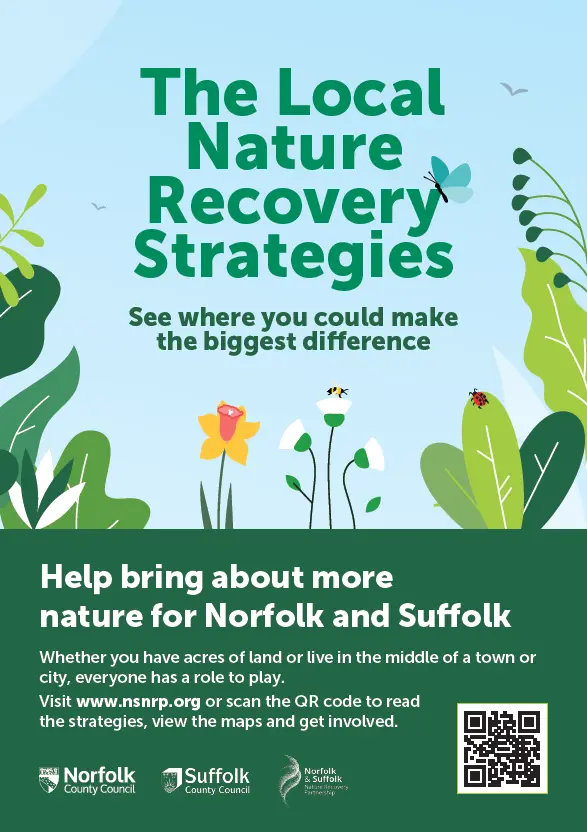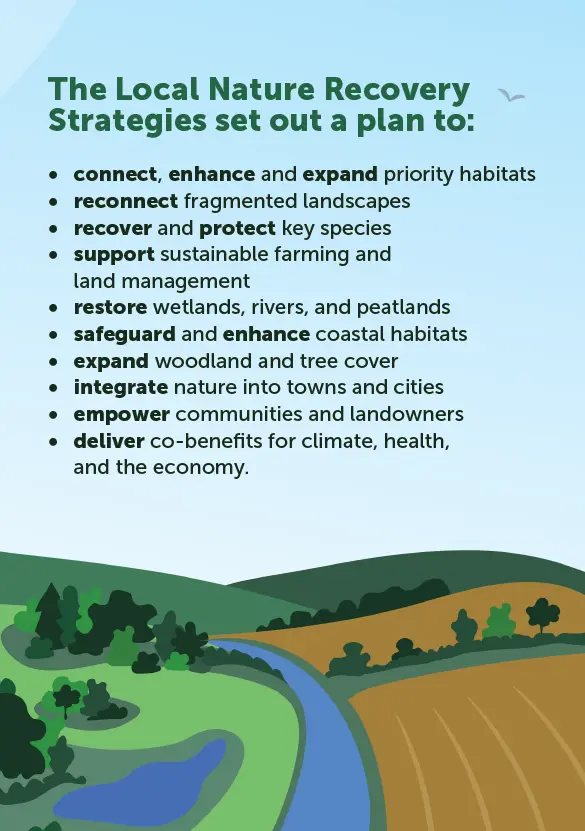You can read our statement on suffolk.gov.uk.


You can read our statement on suffolk.gov.uk.

These aim to address the region’s decline in nature, identify ways to help it recover and deliver wider benefits such as reducing flood risk.
Norfolk County Council and Suffolk County Council have worked closely together, and formed the Norfolk and Suffolk Nature Recovery Partnership, to identify common themes to address the decline in nature and opportunities to enable it to recover.
The two authorities join 46 other responsible authorities in England, appointed by The Secretary of State for Environment, Food and Rural Affairs to lead on preparing a LNRS.
Through Norfolk and Suffolk’s joint Nature Recovery Partnership, we’ve built a very strong foundation from which to lead, support and drive nature recovery action across the region.
Together all these strategies will form a national ‘nature network’, proposing actions such as the creation of wetlands, restoration of peatlands, planting of trees and hedgerows, and more sustainable management of existing woodlands and other habitats like grasslands.
Councillor Richard Rout, Cabinet Member for Devolution, Local Government Reorganisation and NSIPs, said:
“I’m grateful to local nature experts, farmers, interested organisations, other local authorities and members of the public who have contributed their local knowledge and expertise to help create these in-depth strategies.
“There are significant changes on the horizon with the appointment of a mayor and new unitary councils across our two counties. But through Norfolk and Suffolk’s joint Nature Recovery Partnership, we’ve built a very strong foundation from which to lead, support and drive nature recovery action across the region.”
Councillor James Bensly, Norfolk County Council’s Cabinet Member for Environment and Waste, said:
“The publication of these strategies is a significant milestone, and the product of several years of considerable work across the county councils in Norfolk and Suffolk.
“There will be many benefits to the outcomes of these strategies – primarily reversing the decline in nature.
“But their impact will be felt in many other ways, such as mitigating inland flooding risk, creating new green spaces to improve our health and wellbeing, and supporting farmers to bring new funding into the rural economy and generate employment and training opportunities.”
The strategies can be found on the Norfolk and Suffolk Nature Recovery Partnership website.
This is a joint news release from Norfolk County Council and Suffolk County Council.
